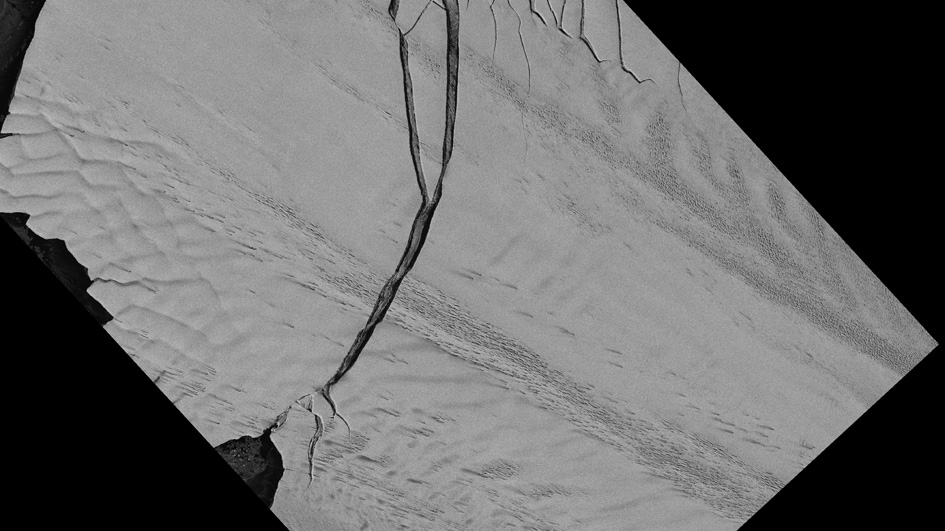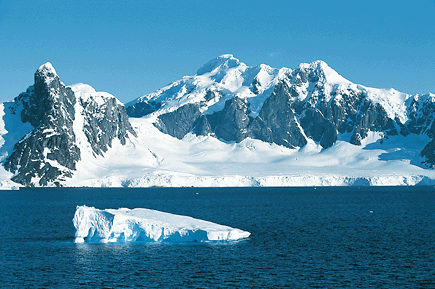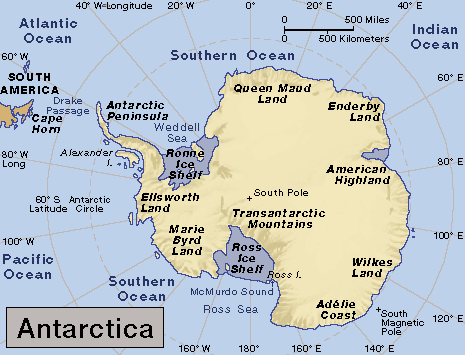Melting of West Antarctic Glaciers Appears “Unstoppable”
Tuesday, May 13th, 2014May 13, 2014
A huge area of the West Antarctic Ice Sheet appears to have begun a gradual but “unstoppable” slide into the sea, according to two new studies. The findings are the first firm evidence that this section of the ice sheet, which currently poses the largest threat of rapid sea-level rise, is in an “irreversible decline.” The loss of ice there, scientists have warned, is the first step in a chain reaction that could contribute significantly to higher-than-predicted global sea levels over centuries. Moreover, said scientists involved in the research, the simulanteous retreat (shrinking) of ice over such a large area suggests that the process was triggered by a common cause, which they link, in part, to global warming.
The first study, by scientists from the University of California, Irvine, and NASA’s Jet Propulsion Laboratory, is based on 40 years of observations of six glaciers bordering the Amundsen Sea. Since 1973, the amount of ice released by the glaciers has risen 77 percent annually, an amount nearly equal to the ice entering the ocean each year from the entire Greenland Ice Sheet. The leading edges of these glaciers, called tongues or ice shelves, float on seawater. The point where a glacier loses contact with the underlying terrain and begins to float is called the grounding line. Nearly all the melting takes place on the underside of a glacier beyond this line, where the ice comes into contact with warm seawater.
The scientists found that the speed of the Amundsen Sea glaciers flowing downhill from the center of the ice sheet has increased over the past 40 years. In addition, the glaciers’ grounding lines have been retreating. This means that sections of the glaciers are now floating above places they used to touch. The grounding line for the Pine Island Glacier, for example, retreated by 19 miles (31 kilometers) between 1992 and 2011.
The second study involved advanced computer modeling of the Thwaites Glacier, one of the six glaciers in the NASA study. Scientists had thought this glacier would remain stable for thousands of years. However, said glaciologist Ian Joughin of the University of Washington, Seattle, “this glacier is really in the early stages of collapse.” Its grounding line retreated by nearly 9 miles (14 kilometers) from 1992 to 2011.

Glaciers in the NASA study appear in red. The darker the color, the faster the speed at which the glaciers are flowing toward the Admundsen Sea. (Image credit: Eric Rignot)
The retreat of a grounding line could be the first step in a chain reaction. In this process, as the line retreats, the glacier gets thinner. As the ice grows thinner, it offers less resistance to the water and flows faster. The glacier also loses its ability to hold back inland glaciers flowing toward the sea. These glaciers, in turn, grow thinner and flow faster. The result is more ice flowing into the sea and rising sea levels.
Scientists are still uncertain about the timeline for the collapse of the Amundsen Sea glaciers. The NASA scientists estimated that it could take as few as 200 or as many as 900 years for all the ice in the glaciers to melt. That meltwater would be enough to raise all sea levels by 4 feet (1.2 meters). According to a recent report by the United Nations Intergovernmental Panel on Climate Change, sea levels are projected to rise from 1 to 3 feet (26 to 98 centimeters) by 2100. However, most projections of sea-level rise do not take into account ice loss from West Antarctica. The findings from the new studies, the NASA scientists say, suggest that these projections should be revised upward.
Additional World Book articles:
- Antarctica: The Hidden Continent (a Special Report)
- Meltdown: Climate Change in the Arctic (a Special Report)
- The Great Meltdown (a Special Report)





